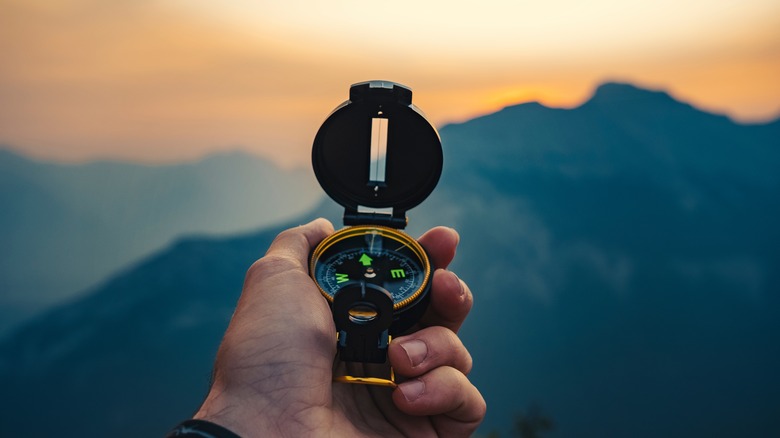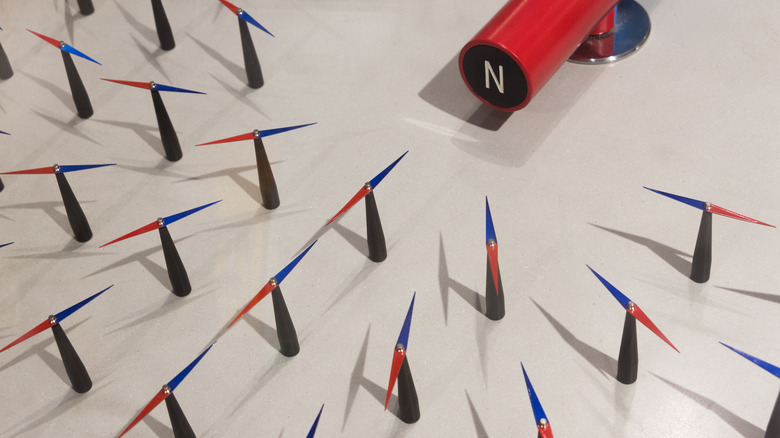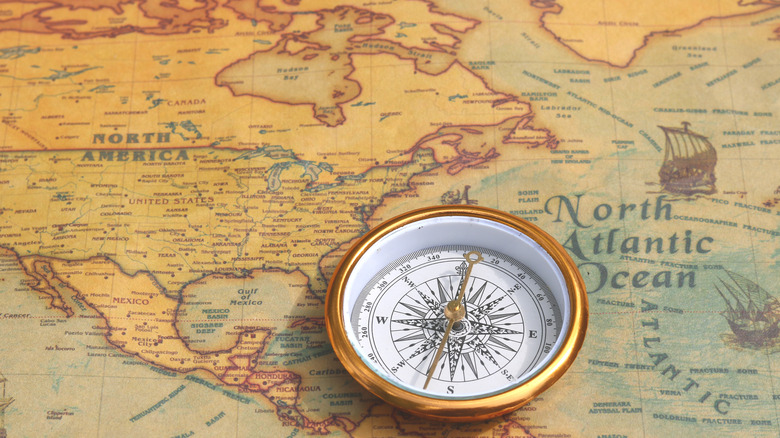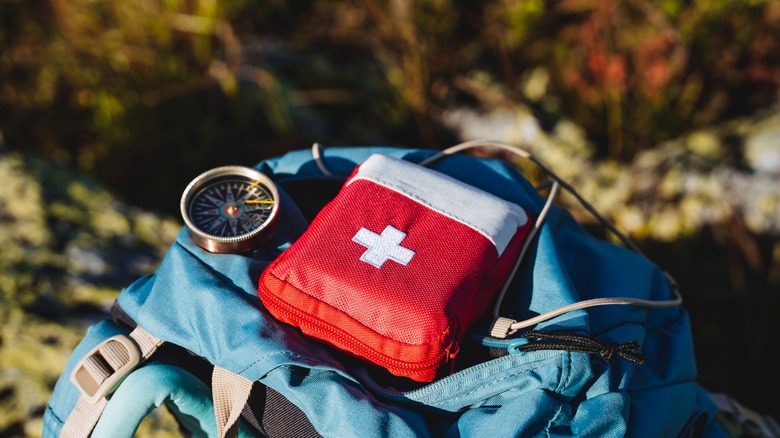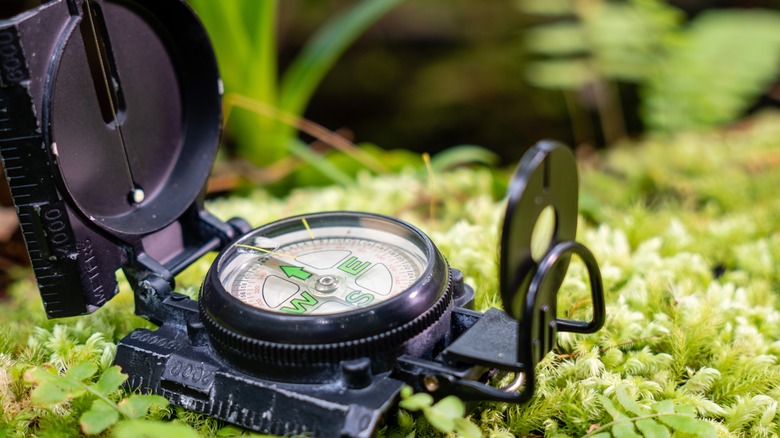How To Use A Compass (& Why You Need To Bring One On Your Next Hike)
A compass is an age-old tool for navigation. It is simplistic in design and function. In today's high-tech world, the humble compass seems to be somewhat forgotten, replaced by modern technology and navigating devices. However, it is still critically important for anyone spending time outdoors to know how to use a compass. In fact, despite all the modern innovations that are available, a compass should still be considered an essential piece of equipment whenever you are adventuring outdoors and most certainly when hiking. This is especially true for anyone embarking on a solo hike.
Like any tool or piece of equipment, in order to get the most out of a compass, it is important to know how it works and how to properly use it. It is also essential to know how to pick the proper compass for your intended activities, as well as being able to utilize it as a crucial piece of emergency equipment.
How a compass works
In reality, a compass is a relatively simple device that relies on magnetism to perform its function. Whether you realize it or not, the earth has a magnetic field that is essentially anchored by two poles — magnetic north and magnetic south. A compass uses a magnetized needle that is constantly drawn to magnetic north. No matter how elaborate the model of compass, it still relies on the same magnetic attraction of needle to pole to determine direction.
This reliance on the earth's magnetic field does raise a couple of issues: deviation and variation. Each of these is a disruption in the magnetic field that can affect a compass' ability to accurately point to true north. Deviation is caused by metal objects or electrical fields that can disrupt the magnetic field in a particular area. This most often happens when aboard a boat, vehicle, or airplane. However, it can be an issue for hikers in some areas. The best way to account for compass deviation is to utilize a deviation chart or card to correct for the error.
Variation, also known as declination, is a bit different. This is something that affects all compasses to varying degrees depending on physical location. However, it is a factor that must be addressed in order to ensure the accuracy of a compass.
Dealing with declination
A compass always points north. Right? Well, not exactly. A compass is designed to point in the general direction of magnetic north, which isn't actually true north. The difference between magnetic north and true north is measured as the variation or declination. If hikers are using a compass to get a general sense of direction, this isn't much of an issue. However, if they are attempting to navigate based on map directions, they must adjust for declination in order to get an accurate heading.
While this may sound like a daunting task, it is simply a matter of addition and subtraction. In North America, you should subtract for an easterly declination and add for a westerly declination. So, what exactly do you add? The amount of declination will vary depending on how far east or west of true north you are located. These numbers will appear on most good charts and maps. However, you can also utilize a declination chart to determine the amount of correction that is necessary.
How to use a compass
All compasses have some basic components that are used to take a bearing to help navigate. These include the direction of the travel arrow, dial or bezel, orienting arrow, bearing line, and magnetic needle. Using these components in conjunction with one another, it is possible to take a bearing either on a map or by sight in the field.
To take a bearing by map:
- Place both the map and compass on a flat surface.
- Mark where you are and where you want to go.
- Draw a line between those two points.
- Place the compass base along the line, making sure the direction of the travel arrow is pointing at the destination.
- Twist the compass dial (bezel) until the orientating arrow is facing north on the map.
- Then, while holding the compass flat, turn your body to where the red magnetic needle is facing the orientating arrow and the direction of the travel arrow will be pointing toward your desired destination.
To take a bearing by sight:
- Holding the compass flat, point the direction of the travel arrow toward the landmark you have chosen.
- Rotate the compass dial until the orientating arrow is lined up with the red magnetic needle.
- As long as the orientating arrow and red magnetic needle remain aligned, the direction of the travel arrow will point toward your destination as you move.
Why you need to bring a compass on your next hike
The most obvious use for a compass is to tell direction. That is, in simplest terms, what a compass does. However, as mentioned above, these directions can be applied in a variety of ways. For example, they can help you orientate a map, locate your position, and find your way to a destination. They can also help you find your way back to your vehicle or base camp if you should become lost while hiking.
Of course, one could argue that electronic navigation devices can do the same thing. However, electronic devices are not invisible nor infallible. A myriad of maladies can cause electronics to become unreliable, such as dead or weak batteries, distorted signals, weak or no signal, broken screens, and various malfunctions.
With that in mind, it is always a good idea to carry a compass — even if it is simply as a backup to check the accuracy of digital devices or in the case of an electronic malfunction.
Choosing the right compass
When it comes to choosing the right compass, there are several questions that need to be considered as to when, how, and how often it will be used. Is it for emergency use only, as backup to digital devices or primary navigation tool? How often will you use it? Will it be used at night? Will it be exposed to water or used in rugged terrain? Will it be worn on a lanyard or stowed in a backpack?
As is the case with all equipment and gear, the size and weight are always factors. A luminescent needle and numbers are handy if navigating at night, while a magnifying lens built into the baseplate is helpful when using a compass in conjunction with a map. According to REI, the primary features serious adventures should look for when choosing a compass (beyond the essential components) include a declination adjustment, sighting mirror, clinometer, and global needle.
